Artist Kinu Kamura Began Her Latest Series by Printing Screenshots From Instagram—and Ended Up Somewhere Else Entirely
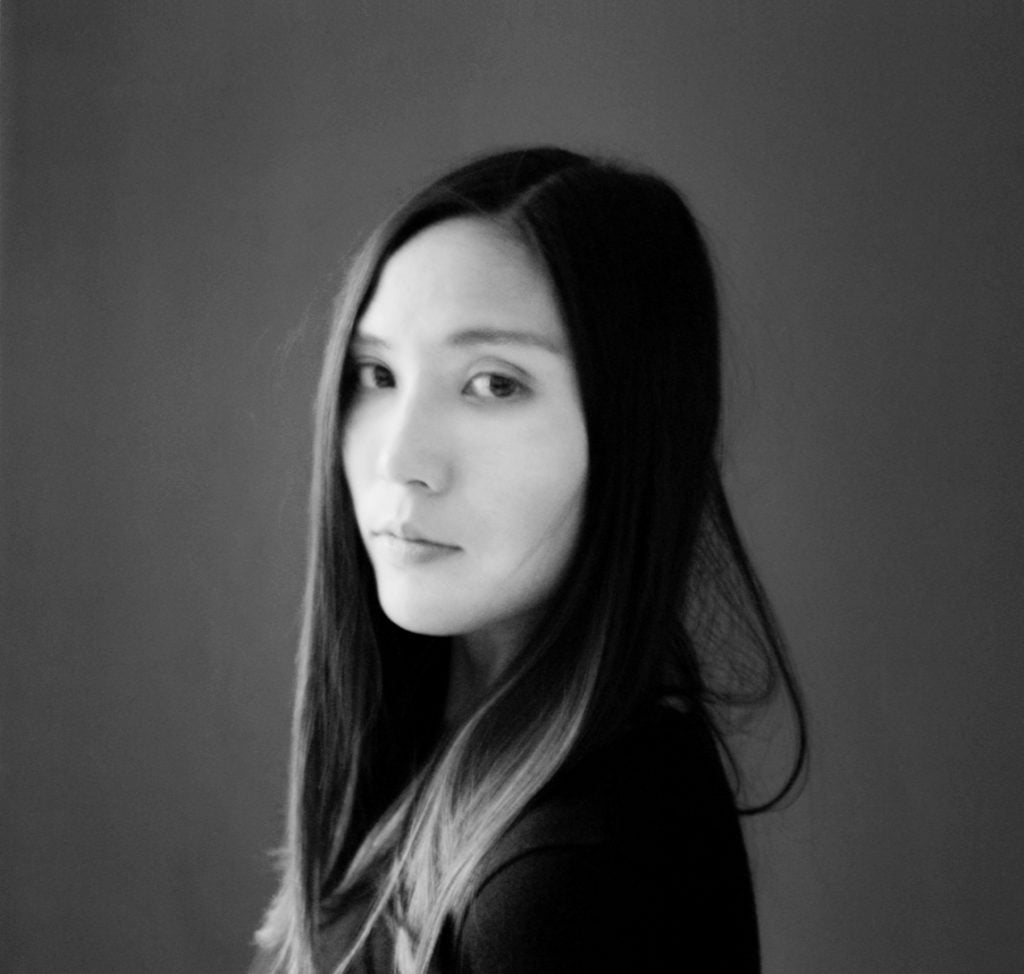

Katie White

“It’s layers upon layers upon layers,” says Kinu Kamura, the young French-Japanese artist currently showing at Z Gallery Arts in Vancouver. Her exhibition “Post Matter” brings together four recent bodies of work, each of which is an increasingly abstract interpretation of her source inspiration: Instagram screenshots.
As a millennial, Kamura both grew up with the Internet and remembers a time before everyone had a cell phone in hand. When she found herself screenshotting art Instagram accounts as a form of collecting visually interesting material, she began to wonder, with equal measure of curiosity and caution, how social media might be informing the way she creates. She printed out some of these Instragram images and began to experiment.
So how did she go from that to creating large-scale abstract diptychs named after Japanese kanji, the ancient philosophical elements? We sat down with Kamura to find out.
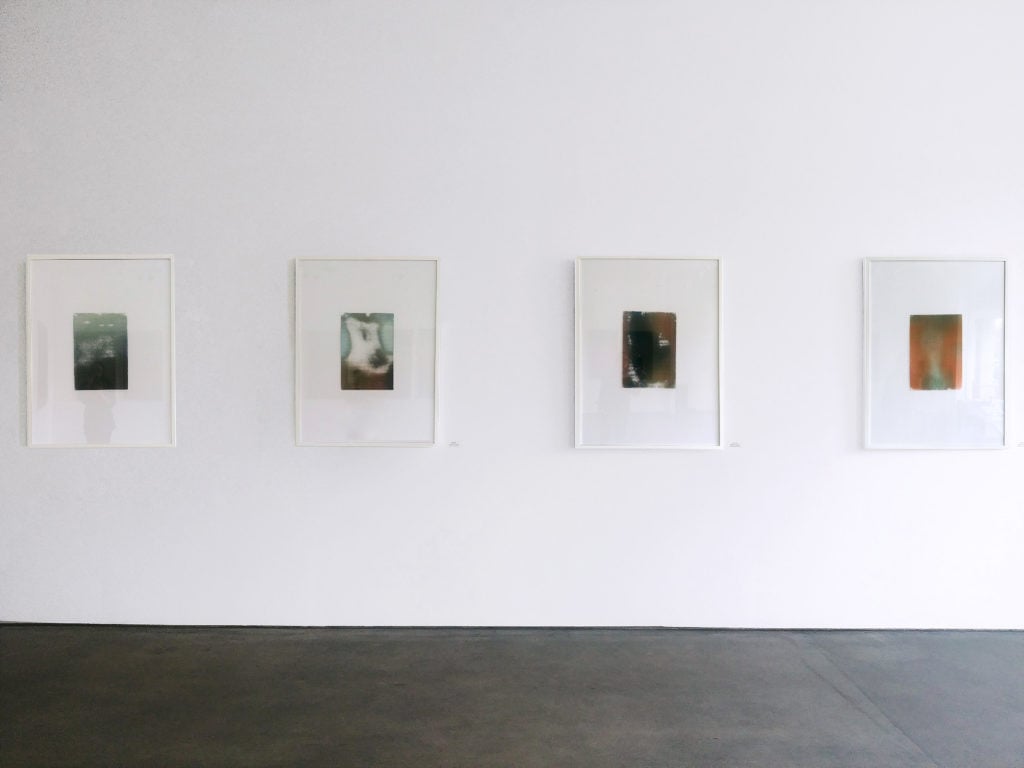
Installation view of “Post Matter,” 2019. Courtesy of Z Gallery Arts.
This body of work started with you printing out Instagram screenshots. Why did you decide to do that?
I’m not the first artist to deal with the Instagram world. Nowadays, artists, galleries, even museums are posting so much artistic content to Instagram. I realized that I could identify trends and fashions in terms of material choices or concepts. There are tendencies you can draw out from that world—for instance, everyone is using resins, or dripping paint, or addressing the same subjects. Seeing this made me wonder how this more “reachable” content was influencing us artists and our creative processes. It’s not good or bad, it’s just wondering what is or could be the result. Are we just making bad copies? “Inspired bys”? Questions of authorship and originality—all the works in “Post Matter” started with those questions.
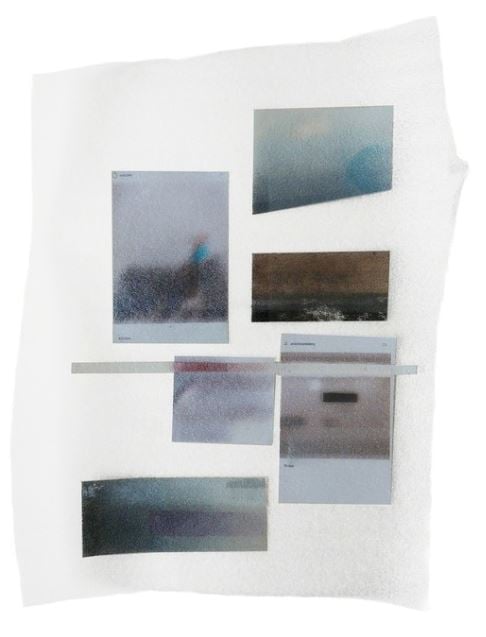
Kinu Kamura, Saatchi Art Palaisinstaresidency (2017). Courtesy Z Gallery Arts.
Where did the first of these four series begin?
It’s important to say that I’m nearsighted and have been since I was a teenager. At first, it wasn’t very bad and I didn’t really wear my glasses, but it eventually got much worse. When I was in my painting classes, a certain teacher would always tell students to squint and stare. I realized I didn’t need to do this to catch the different values of lights and colors. Because I never wore my glasses, I had learned how to contrast the most important values imparted to me and these were what would project on the canvas. Which is the say, my poor eyesight was already filtering what I saw and shaping what went onto the canvas.
Looping back to Instagram, I had decided to print some of these screenshots and then blurred them by putting them behind foam paper so as to recreate the effect of my vision (and, also, because I have no legal rights to these images to use them as is). Then I tried to recreate what I’ve seen with spray paint as a layer of interpretation beside them. These first works are almost like mood boards. I included the account names in the titles as a kind of clue, or tribute.

Kinu Kamura, painterspaintingpaintings (2017). Courtesy of Z Gallery Arts.
So from this first series of almost mood boards, what did you transition to?
This second series also incorporates foam paper, but I’m no longer including the actual print of the screenshot anymore. It’s me just giving an impression. I like to work with spray paint because it’s diffuse and doesn’t always stick to the foam paper. My sense is that the image seems to destroy itself. It’s ephemeral, which I like. It’s forgetting the source. As for the materials I use, I used to spend lots of time perusing fine art shops, but the supplies are expensive and, in my opinion, it’s actually not that fun to use things for the purposes they were made for. I’ve always fantasized about construction processes as well. If I’m doing an installation, people think I don’t know how to use tools because I’m this small woman. So I challenge myself. I’d go to the hardware store and see these materials. I’m not genius of construction and I didn’t know what the materials were made for, but I found the foam paper and spray paint very interesting. In some way, not knowing liberated me to think about these materials differently, for my own purposes.
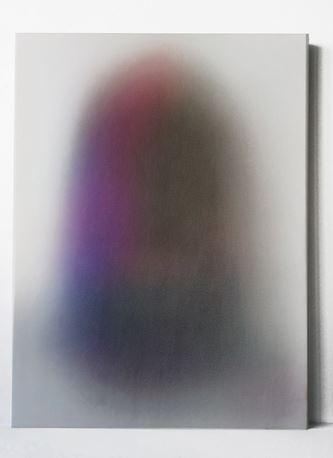
Kinu Kamura, Bloom of youth (2017). Courtesy Z Gallery Arts.
The third series looks a bit different. For one thing, they’re on canvas.
Yes, I did something different here. Instead of using the source image from Instagram, I took pictures of other people’s works at galleries myself. I’d look at the photos, then get rid of the image and paint directly onto canvas. These required me to work with memory and my impressions and feelings. Again, I use spray paint because it has this all-over quality that’s imperfect and diffuse, like memory. I named the final canvas based on how these made me feel rather than the source Instagram account. I had thought these were going to be the final works in this project.
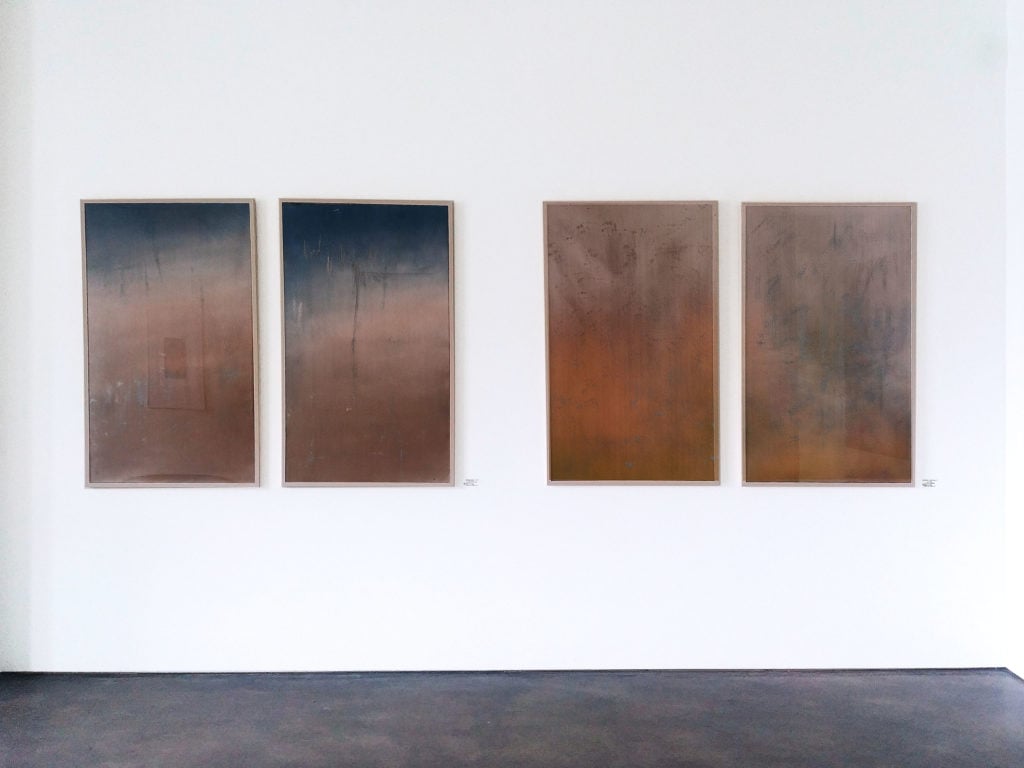
Installation view of works from the fourth series of works in “Post Matter,” 2019. Courtesy of Z Gallery Arts.
So how did the fourth series, these diptychs on foam paper, come about?
For this exhibition, Zohra Bonnis, the founder and director of the gallery, wanted to include my small series of foam works, the second series. I went to look for them in my studio and I saw that some of the spray paint had come off. I had almost entirely forgotten what these were, and I had definitely forgotten the original Instagram images. So I returned to them free of my original concept for the series, wanting to paint just as a child wants to paint.
These works are about color and technical process. These are diptychs that can be shown on both sides, the front or the back, and oriented in any direction to create different compositions as the viewer’s mood changes. I’ve titled these after the Japanese Kanji, which are different ancient Asian elements like fire or sky. To me, choosing these titles to be something more spiritual is another layer. It’s a chance to get in touch with something immaterial, a balance between being lost in world of social media and being in touch with something greater. What is true of Instagram is that art is about sharing between people. The more I try to mature in my art, the more I do try to connect, but also to the world around me. In some ways, it’s a pursuit of balance.

During the installation of “Post Matter” Kamura was struck by the color relationships when the works were down together. She said it reminded her of a spice market or bazaar. Courtesy of Z Gallery Arts.
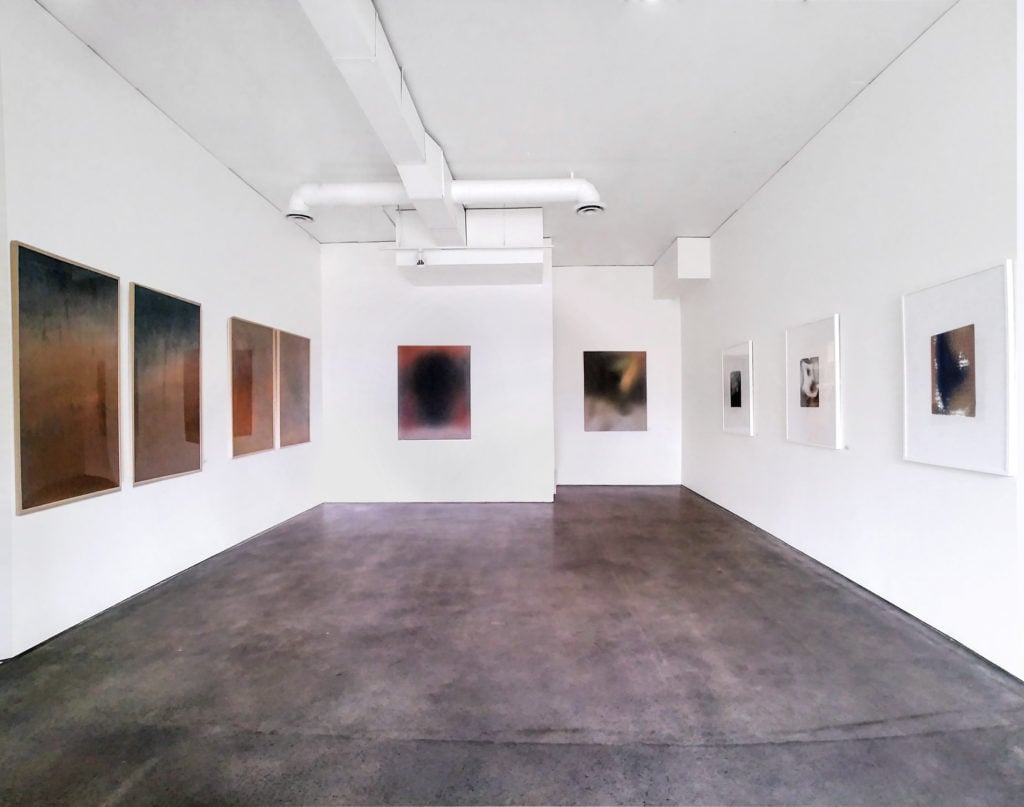
Installation view of “Post Matter,” 2019. Courtesy of Z Gallery Arts
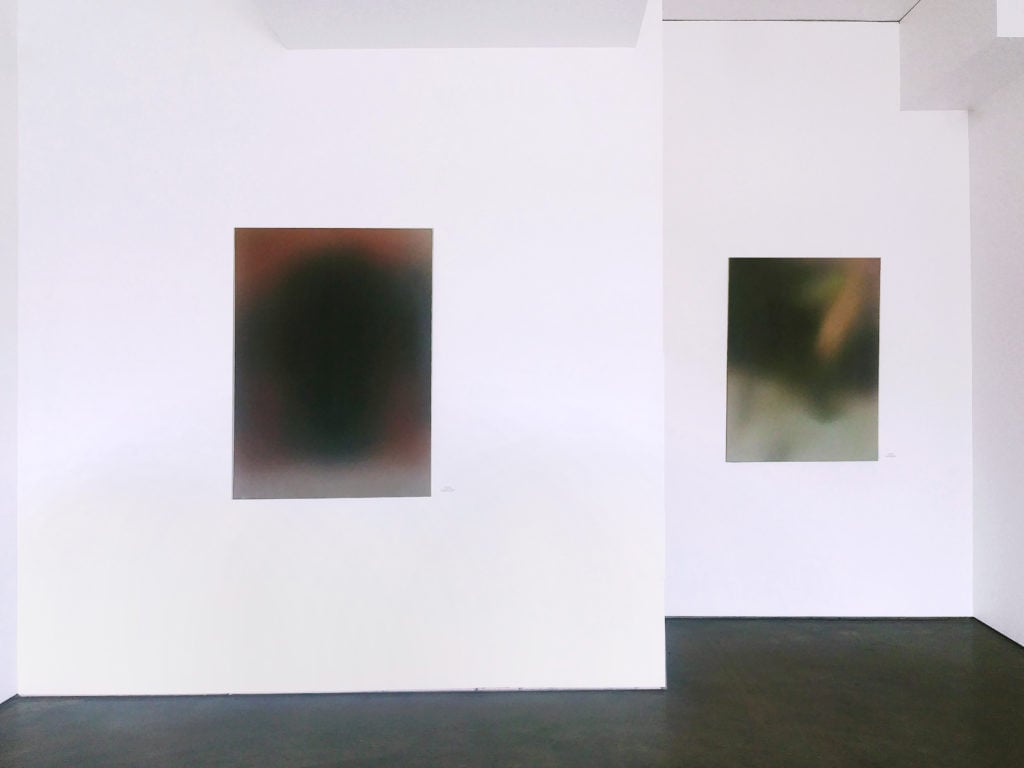
Installation view of “Post Matter,” 2019. Courtesy of Z Gallery Arts
“Post Master” is on view through June 30, 2019, at Z Gallery Arts in Vancouver.
